|
By Kathleen Kocks
Courts nationwide face
increased case loads and administrative responsibilities,
yet struggle to obtain adequate funding from legislatures.
The courts are also addressing complex societal issues, like
same-sex marriages and rights-to-die, and are striving to
issue rulings that follow the laws of the land.
But the greatest challenge
is a growing threat to independence of the judiciary. It is
under insidious attack, public and partisan, by people who
don’t understand or don’t agree with the courts’
interpretations of laws. “Rule how we want, not as the
law says” seems to be the cry. Many Americans appear
to have forgotten that legislatures make laws, and courts
make decisions based on laws.
This great challenge
was universally voiced by nine GW Law alumni who share a common
perspective, as justices on their states’ Supreme Court.
Generously granting interviews, each justice gave candid insight
to the challenges, responsibilities, lessons learned, and
enjoyment of being at their state’s top court. Their
words are worth heeding.
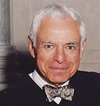 |
|
Justice
Paul L. Rudman, JD ’60
Maine Supreme
Court, 1992–2005 |
|
 |
|
Q:
What are your court’s biggest issues and challenges?
Our biggest legal issue is the appeals resulting
from the U.S. Supreme Court rulings in Blakely v. Washington
and United States v. Booker on sentencing guidelines.
These decisions and their progeny affect our sentencing statutes,
and we are grappling with those changes at great length.
Our biggest challenge is money. We are grossly
underfunded, which presents very serious problems for the
third branch of government. We can handle the cases, but we
have to look to others for money.
A serious problem at both the state and
the federal levels is that the judiciary is under attack,
and the courts don’t have the public respect they once
had. Why the judicial branch has lost respect is a troubling
question.
I think it partly results from a gross misunderstanding
about the judicial branch by the executive and legislative
branches. Our coequals don’t seem to feel the need for
judicial independence. We are in a period of “in-your-face”
politics that says, “I have the purse strings and the
votes, and I don’t care what you think.”
You also hear complaints about “activist”
judges. But if you go back in history, you see a number of
decisions that were then considered unusual but are universally
approved today. Were those judges activists or were they just
very enlightened?
Q:
Why did you become a justice and what does your job entail?
Perhaps I became a justice because my father
served on this court and sons sometimes like to follow in
their fathers’ footsteps. Then again, I always felt
this position was the ultimate for any lawyer, the pinnacle
of the profession. I can indulge in dealing with legal issues
and thinking. It’s been a very enjoyable experience.
I think it is the best job in state government.
I’d say three years at GW and 32 years
as a lawyer in a very, varied practice best prepared me for
this job. The more experiences an appellate judge has, the
better he or she can perform.
Maine has no intermediate appellate court,
so the Supreme Court gets everything. We are a very congenial
court, and most of our decisions are the result of everyone
throwing in something. Sometimes we disagree, but no one gets
disagreeable.
As to changes during my 14-year tenure,
we have many more administrative meetings. Domestic violence
cases are increasing, and we’re seeing more results
of the drug problem, a problem we are not solving. We have
had some improvements, with drug courts to help addicted people
as opposed to just throwing them in jail.
But the cases that tug at your heartstrings
are parental termination cases. In the past, extended families
often took care of the child. In many cases now, the child
ends up in limbo, not with a real family, but in a state institution
for years. Those are very significant cases.
Looking back, I think the court is better
off and more sensitive to a lot of issues. I am pleased to
have played a part in those improvements.
I recently resigned my position, effective
July 1. I plan to return to practicing law, working in mediation
and arbitration. I think I’ve learned a thing or two
about what grabs the attention of—or offends—an
appellate judge.
Q:
What did you learn from being a Supreme Court justice?
I learned that lawyers can make a big difference
in trial court results. They can help the judge or mislead
the judge, selling something they should not be able to sell.
In many cases, you wonder why the trial court came to the
conclusion it did, and when you look around, you see the poor
judge was snookered by a lawyer.
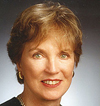 |
|
Justice
Kathryn M. Werdegar, JD ’62
California
Supreme Court, 1994–2014 |
|
 |
|
Q:
What are your court’s biggest issues and challenges?
We have several issues at the forefront.
One is punitive damages; in two recent U.S. Supreme Court
cases, the court articulated some due process limits on punitive
damages, but the language was very vague. We also have takings,
a constantly evolving issue that concerns when restrictions
on private property use become a taking requiring compensation.
Another issue is the application of sentencing guidelines.
And we have a range of family law issues and ramifications
of the state’s domestic partnership law.
We also have separation of powers issues.
To what degree can different branches of government be involved
with each other without violating the separation of powers?
This is a big issue here and nationally, where some legislators
are suggesting a watchdog agency for the federal judiciary.
The biggest challenge our Supreme Court
faces is the timely processing of our death penalty cases.
Appeals come directly to us from the trial courts. We are
balancing the need for efficiency with the needs to provide
defendants with competent representation and allow the court
time to give the issues fair and thorough consideration.
Q:
Why did you become a justice and what does your job entail?
When I graduated from GW and returned to
San Francisco, I wouldn’t have dreamed of becoming a
Supreme Court justice. But looking back, I see how my path
brought me to where I am today. After law school, I worked
in Washington in the Appeals and Research Section of the Department
of Justice’s Civil Rights Division, then worked in California
writing and editing books for the state Bar’s continuing
education program. Next I served as a law professor, then
as a law clerk to a California Supreme Court justice.
By the late ’80s, I was accustomed
to analyzing the law from academic and impartial perspectives,
and I had drafted many judicial opinions. I was encouraged
to apply for the appellate court, was appointed, then elevated
to the Supreme Court. I still am amazed at where I am today.
It’s thrilling to be involved with
contemporary legal issues, and every legal issue of importance
to the citizens ultimately comes to us. Being immersed in
the law of the state and in the judicial system keeps you
stimulated, challenged, and active. It’s a tremendous
responsibility, but a great privilege to be engaged with my
colleagues and staff and to serve the people of the state.
Q:
What did you learn from being a Supreme Court justice?
Reasonable minds can differ, and you have
to respect the judgment of your colleagues, even if you don’t
agree with them. You have to reach into inner reservoirs,
try to put aside your preferences and resolve the case as
best you can, given what the parties argued, what the research
supports and what the ramifications of the ruling will be.
I also believe that a dissent improves an
opinion. Everyone thinks harder as the opinion and dissent
go back and forth through several drafts, addressing the various
points until everyone has had their say.
I have also learned that the public has
little understanding of the role of appellate courts. In the
trial court, the jury finds the facts of a case and the court
applies the law based on the jury’s findings. The Supreme
Court grants review of cases that require us to decide questions
of law and speak to a broad legal principle.
People may also not understand courts cannot
reach out and make law, and courts are constrained by what
cases come before them. More importantly, the public doesn’t
seem to understand—particularly when appellate courts
make very unpopular rulings—that the courts’ role
is not to implement the will of the people, but to be the
buffer between the people and what the enduring principles
of law in our state and federal constitutions require. We
implement the rule of law.
It is also our job to interpret statutes.
However, I’ve found that legislatures often leave a
lot to the courts. To get some bills passed, they sometimes
leave provisions ambiguous or contradictory. In those cases,
the courts have to figure out what the legislature intended.
If legislation is unconstitutional, as the court understands
it, then we have to strike down a law.
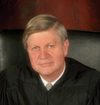 |
|
Chief
Justice Clifford W. Taylor, JD ’67
Michigan Supreme
Court, 1997–2008 |
|
 |
|
Q:
What are your court’s biggest issues and challenges?
We get the usual run of cases, but many
are very consequential to the state’s jurisprudence.
The hottest current state issue is whether citizens have the
right to walk the Great Lakes beaches without limitation or
whether people who own property along the beaches can preclude
walkers. This is important because Michigan has an extensive
shoreline, greater, I believe, than any contiguous U.S. state.
We also are dealing with many cases relating to the tort reform
legislation of the last decade.
On a more philosophical plane, one of the
great issues here, and in the country, is whether courts are
improperly usurping legislative authority. I believe our court
is on the forefront of this discussion. We strive to not engage
in policymaking from the bench. When any court gets into policymaking,
outside the common law, it becomes inevitably partisan and
is usually crowding out the legislature. This is unfortunate
as it miscomprehends the proper delegations of power to both
us and the legislature in the Constitution.
Q:
Why did you become a justice and what does your job entail?
I was very content practicing law and never
anticipated becoming a judge, but this opportunity arose and
was attractive to me. It is a very intellectually rewarding
job and serving as chief of this great court is an honor.
Historically, important legal issues that have affected the
country generally seem to frequently arise in Michigan first,
such as worker injury and compensation, union issues, and
environmental concerns.
We have a very fine court with judicial
conservatives and liberals. The court is thoughtful. As to
what I didn’t expect, it is the monastic environment
of such a court. Unlike trial courts, where you have a lot
of contact with litigants, most days we only see clerks and
our colleagues on the court. Yet, one gets used to it and
even comes to appreciate it.
The difference between being a justice and
the chief justice is trying, in some sense greater than is
the responsibility of other justices, to look to the needs
of the institution. I am the fortunate beneficiary of a strong
administrative staff and they have made being chief justice
not as demanding as I had anticipated.
Q:
What did you learn from being a Supreme Court justice?
I’ve learned to be careful in reaching
conclusions. Sometimes your first impression about a case
isn’t the correct one. It’s also important to
understand that the people in this country, not judges, govern.
We must, as the founders did, respect this. It is well to
recall that this is the central organizing principle of our
Constitution.
 |
|
Chief
Justice Barbara J. Pariente, JD ’73
Florida Supreme
Court, 1997–2006 |
|
 |
|
Q:
What are your court’s biggest issues and challenges?
Maintaining the integrity, impartiality,
and independence of the judiciary is probably our biggest
issue and challenge. An increasing lack of basic understanding
of our democracy’s three coequal branches of government
and of the judicial branch’s role is creating more need
to preserve the independence of the judiciary against attacks.
Adding to the problem, more courts are required
to rule on issues that are deemed controversial. We have been
in the forefront of such issues, most recently with the Terri
Schiavo case. We’ve also had to rule on abortion issues,
death penalty issues, and the presidential election of 2000.
We will soon have to rule on school voucher issues. Any issue
that involves the constitutionality of a statute also raises
controversy. But ruling on such issues is our obligation.
I also think the media contributes to the
problem because it doesn’t look at issues in depth.
Itreduces these very complex issues into being “for”
or “against” something.
Maybe the judiciary is just a good political
whipping boy. But we can’t respond to these attacks
without violating our ethical duties rooted in the guarantee
of due process. Meanwhile, everyone says they are for a fair
and independent judiciary, but they are also saying “only
ifyou rule as we want.”
Another challenge is the budget. Our state
court system’s budget is less than 1 percent of the
state budget, but we have to fight for every dollar allocated.
A third challenge is security for judges.
It is a challenge to not just have a good plan but also have
the increased money for security.
Q:
Why did you become a justice and what does your job entail?
After 20 years of practicing law, it was
time to take the next step in my career, and I became a judge
on the state appellate court. I hoped to pay something back
to the system and have a broader impact, while also being
more intellectually involved in the law. Three years later
an opening came on the state Supreme Court and I was qualified
for the position.
I had an excellent education at GW, a two-year
clerkship with a federal judge, a well-rounded practice of
law and experience at the intermediate appellate court. Even
my undergraduate degree in communications made me suited for
this position.
It is so multifaceted. In Florida, we handle
all death penalty appeals, so we are involved from the first
appeal until the process ends. We have oral arguments one
week a month and weekly court conferences on various matters.
We are responsible for discipline of all the state’s
judges and lawyers, and for all rules of court and applications
of justice.
I wear two hats—as chief justice of
the court and as the head officer of the state’s judicial
branch. I am very involved in several initiatives within our
court. These include forming a diversity commission to ensure
our staff and law clerks are as diverse as possible, holding
institutes to help our legislators’ understand the judiciary,
attending events or speaking to service groups and advocating
for increased civic education in our schools.
In early May, we were promoting the use
of the drug court model in Florida for adults, juveniles,
and for child welfare cases when parents are in dependency
situations. The drug court model doesn’t just punish
people. It also deals with the underlying addiction. If you
just send people to jail, you are being penny wise but pound
foolish.
Another innovation is Florida’s unified
family court. It allows us to manage family cases to get better,
consistent results, while also serving as a link to community
services. The basic concept is that a single judge handles
all of the legal problems involving a single family. Some
say judges shouldn’t be social workers or become involved
in such problem solving. This is naïve thinking, because
people don’t realize the kind of problems the courts
see today.
Q:
What did you learn from being a Supreme Court justice?
It is one thing to say the judicial branch
needs to be independent, and it’s another thing when
you are facing public outcry and budget crises. I’ve
also learned that almost every issue that arises has far more
nuances than you originally thought and the solution is far
more complex.
| |
Justice
Barbara Milano Keenan, JD ’74
Virginia
Supreme Court, 1991–2015 |
 |
|
Q:
What are your court’s biggest issues and challenges?
Every session of court hears cases that
affect people in our state; so in that regard, whatever happens
in our court is the biggest issue. However, Virginia is a
death penalty state, and the fair application of the death
penalty is an issue that always weighs heavily on our court.
Looking at the greatest challenge, I’d
say that all courts today face the issue of judicial independence
and pressure from the executive and legislative branches.
In terms of seeking people who have defined political philosophies,
that’s always been a prerogative of the person who selects
judges. But the Terri Schiavo case is a recent example of
the pressure that can be put improperly on judges. In such
instances, judges have to stand our ground, be very clear
about our decisions and be very mindful of what is at stake
if we do not.
Q:
Why did you become a justice and what does your job entail?
After I got my law degree, I just wanted
to be a good lawyer. But when I became a litigator, I had
more opportunity to observe the judges and decided I wanted
to become a trial judge. I never thought of becoming a Supreme
Court judge, but opportunity came my way in 1991, after I
had been a trial judge and intermediate appellate judge, and
I took it. I really love the job.
Being a Supreme Court justice is intellectually
challenging and every day is different. It’s also a
lot of work. People don’t appreciate or know about the
huge volume of information we have to review for each case.
It’s no exaggeration to say we read hundreds of pages
a day of fairly complex material. There’s also a lot
of writing, and trying to communicate simply and concisely
is always a challenge.
Our court also oversees the other state
courts in Virginia. We are also starting a program to evaluate
judges’ performances, as required by the cannons of
judicial conduct. We have a commission to administer the program,
and I am chair of the project. The program will evaluate the
manner in which judges administer justice, rather than the
content of decisions.
The program gives self-improvement information
to judges who typically get little feedback about how others
perceive them. We think it is very important for judges to
have an idea of how the people who appear before them feel
about the judge’s demeanor, courtesy, diligence, attention,
and similar factors. Attorneys, jurors, and others in the
judges’ courts fill out surveys rating the judge.
The program also will inform the legislature
about how judges are perceived. The first evaluations will
be confidential to the judges, who have the opportunity to
act upon the evaluations. A second evaluation will be seen
by the judge and the legislature.
Q:
What did you learn from being a Supreme Court justice?
We have to be constantly mindful that no
matter how arcane, complex, or futuristic the issues before
us are, there are real people in front of the court and many
others who will be affected by our decisions. This is not
an ivory tower and we have a tremendous responsibility in
terms of the impact of our decisions.
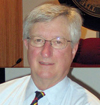 |
|
Justice
James C. Nelson, JD ’74
Montana
Supreme Court, 1993–2012 |
|
 |
|
Q:
What are your court’s biggest issues and challenges?
One very hot topic right now is school funding.
We upheld a district court decision that declared the funding
scheme was unconstitutional, and the state legislature is
now trying to work out a solution.
Another issue involved the state’s
public defender system, prompted by an ACLU lawsuit against
some counties. Some have public-defender offices, but others
do not and judges appoint private attorneys to do the work.
This raised questions about the quality of that representation
and the funding available to properly defend these clients.
The legislature addressed this through a new law, but it’s
too early to know whether it resolves the problem.
Our Supreme Court’s biggest challenge
is funding. We’ve been historically underfunded in Montana,
particularly when it comes to information technology. The
legislature addressed this aspect last session, and we now
have a good source of steady revenue.
The biggest challenge the state and federal
judiciary branch face is judicial independence. We are seeing
increasing attempts by special interest groups to influence
the judicial system. Some groups have dumped millions of dollars
into selected judicial races throughout the country to unseat
judges who are not in their pocket or to elect judges who
are. These groups don’t want independent, fair, and
impartial judges; they want judges who vote their way.
That’s not the way the judiciary works.
We take an oath to uphold our state and federal constitutions.
When we start electing judges who are pawns of special interest
groups, then our democracy is in real trouble and we’ve
essentially destroyed our third branch of government. Our
country seems to be forgetting about the notion of judicial
independence and judges are increasingly defending what we
do, how we do it, and our constitutional right to do it.
Q:
Why did you become a justice and what does your job entail?
Becoming a judge interested me from the
time I started practicing law. I liked the academic side of
the law and when the opportunity to become a Supreme Court
justice came, I applied and was fortunately appointed. I love
the job, interpreting the law and helping people.
Montana’s constitution is unique,
the crown jewel in terms of fundamental rights for people.
We have 17 rights protected in our constitution that are not
in the U.S. constitution and it’s an honor to be able
to uphold that document.
I think my 20-year experience as a lawyer
best prepared me for this position. My private practice was
broad-based; I was also a county prosecutor for 14 years;
and I served on several state boards and commissions. It all
gave me a very broad-based practice in the sorts of cases
that we deal with every day in the Supreme Court.
Montana doesn’t have an intermediate
appellate court system, so we take all the appeals. Our work
is very interesting and our workload is tremendous.
Q:
What did you learn from being a Supreme Court justice?
I’ve learned how the courts are really
the last refuge for many of our citizens, particularly the
poor and powerless. That’s why it troubles me to see
attacks on the judicial branch that infringe on the ability
of the court to protect people’s constitutional rights.
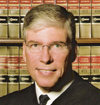 |
|
Justice Henry duPont Ridgely, LLM ’74
Delaware
Supreme Court, 2004–2016 |
|
 |
|
Q: What are your court’s biggest issues and challenges?
Appeals to the Delaware Supreme Court are
a matter of right from our Court of Chancery, Superior Court,
and Family Court. In addition to the major claims all appellate
courts have, we have a special set of circumstances in Delaware.
There are more than 600,000 business entities registered in
Delaware, including about 60 percent of the Fortune 500 companies.
It should be no surprise that the Delaware courts address
business issues with national and international significance.
Issues of corporate governance, mergers and acquisitions,
fiduciary duties in the post-Enron era, and major commercial
cases brought by and against business entities are a steady
part of our civil dockets. Many of these cases involve matters
of first impression and in any such case, the challenge is
to do justice in a way that not only fairly resolves the issues
before us but also sets a clear precedent that allows business
to plan their transactions based upon a body of law that is
stable and predictable.
We are seeing growing demands on all our
courts due to rising caseloads. Our courts face resource issues
in the face of this growth, especially in the area of indigent
services. The good news is that Delaware has fared better
than many other states because our governors and members of
the General Assembly have historically recognized the importance
of adequate funding for the judicial branch. But there is
constant pressure on them to spend money on other areas of
public need.
It is a challenge everywhere for judges
to find the time to join with the Bar and educators in teaching
the public about the importance of the rule of law and the
role that an independent judiciary has in preserving our freedoms
and way of life. Emerging democracies around the world certainly
see that importance and our nation’s leadership role
in the fair administration of justice has been the example
for them to follow.
Q:
Why did you become a justice and what does your job entail?
I think most trial judges think about being
appellate judges at some point. I was a judge on the state
Superior Court for 20 years and the president judge of the
court for the last 14 years. As such, I sat by special designation
on our Supreme Court dozens of times and lived that experience
before my appointment as a justice. Participating in a court
that has the last word and sets precedents is challenging
and satisfying. I wanted to bring my experience to the Supreme
Court and, with my colleagues, shape Delaware common law for
the better.
If I have to identify the experiences that
best prepared me to be a justice, it was my work as a Superior
Court judge, working with very talented people and benefiting
from mentors as a lawyer and a judge. My best mentor was my
father, Henry J. Ridgely, who practiced law in Delaware for
50 years and also was a graduate of the GW Law School in 1939.
My trial court experience has been important because in every
case that comes before the state Supreme Court, there are
arguments that the trial judge erred in some way. The collective
task of the justices is to evaluate the performance of the
trial judge. My experience as a trial judge helps me do that.
The decision-making process is different
as an appellate judge. A trial judge decides alone, based
on information usually given in open court. At the Supreme
Court, we are involved in a collegial review. Case information
is in a written record or presented through oral arguments
by some of the country’s best lawyers. While we each
make up our own minds, we discuss the case with each other
and work together to form a consensus. As the junior justice,
I get to speak or write my opinion first. So you have to make
up your own mind and express your views, then reconsider it
after you have had the benefit of your colleagues’ insights.
This is my first year on the court and I’m
appreciating what goes on behind the scenes, the collegial
process, and the wit and wisdom of my colleagues. We all get
along very well and share our responsibilities. The Supreme
Court as a whole approves the rules for the administration
of justice in Delaware. Each justice has liaison responsibilities
with one or more courts and the Arms of the Court. I have
liaison responsibilities with the Delaware General Assembly,
our Superior Court, and Court of Common Pleas. Outreach programs
also keep us very active.
Q:
What did you learn from being a Supreme Court justice?
In one sense, it’s like déjà
vu from my first days as a trial judge. I was surprised at
how much occurred behind the scenes to run a trial court,
with the support staff, budgets, and logistics. I had the
experience again as a justice after seeing the work the Supreme
Court does. Today, I have a much better appreciation for the
Supreme Court’s adjudicative and administrative responsibilities
for the entire Judicial Branch and the Delaware Bar. Being
a justice is a great responsibility and honor, for which I
am very grateful. My gratitude also extends to GW Law for
the education I received there in my LLM program in corporation
law.
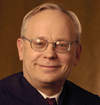 |
|
Justice
Russell A. Anderson, LLM ’77
Minnesota
Supreme Court, 1998–2006 |
|
 |
|
Q: What are your court’s biggest issues and challenges?
We’re busy dealing with the implications
of two recent U.S. Supreme Court decisions. The case of Blakely
v. Washington, which requires that juries find the facts
necessary before any upward departure from a presumptive sentence,
impacts Minnesota’s sentencing guidelines system. We
have a number of cases before us with Blakely issues. The
other U.S. Supreme Court decision, Crawford v. Washington,
concerns the Sixth Amendment right of defendants to confront
the witnesses against them. Left open by the Crawford decision
is the question of the admissibility of certain out-of-court
statements under traditional hearsay exceptions. The Crawford
question before our court, and I assume all state Supreme
Courts, is: What are “testimonial statements”?
For example, is the out-of court statement of a child victim
of sexual abuse to a social worker admissible without the
child’s in-court testimony?
I should also mention that our chief justice,
Kathleen Blatz, has established The Children’s Justice
Initiative, a five-year program that joins our court, Minnesota’s
Department of Human Services, social workers, county attorneys,
police, and others statewide in an initiative to improve the
timeliness of decisions in child protection cases and to expedite
permanent, secure placements for children.
I must also mention the very significant
challenge that state judges are facing to maintain their traditional
independence and yet remain accountable. There is a movement
to politicize the state judiciary by allowing political party
endorsements of candidates in judicial elections, by allowing
judicial candidates to make campaign promises on substantive
issues that might reach the court, and by allowing a system
of fundraising for judicial elections in which justice, if
not bought, may be perceived as favoring the most generous
contributors.
These are notions that are not an issue
in the federal judiciary, where judges are appointed for life.
Their introduction into state court systems, where judges
are elected, has introduced a serious challenge to a strong
and independent state judiciary. After all, judges are not
supposed to be partisans or advocates but neutral arbiters.
Q:
Why did you become a justice and what does your job entail?
The governor at that time had decided that
the Supreme Court needed an experienced trial judge from greater
Minnesota. I happened to fit the bill and I was happy to get
the call. Thus began my work with my very wonderful colleagues
on this court. I believe it is important that members of the
Supreme Court be a diverse group with different professional
and life experiences. Justices should not all be cut from
the same cloth, and the justices on our court certainly are
not.
As for me, my nearly 16 years of experience
as a trial judge best prepared me for this work. I am also
grateful for my professional experience in the Navy JAG Corps,
and for the opportunity I was given to complete a master of
laws degree at GW. Those were wonderful years. As to the job
of Supreme Court justice, in addition to hearing cases and
writing opinions, members of our court serve on many administrative
committees and boards, and also serve as liaisons between
these committees and the court. It is a lot of work but also
a lot of fun.
Q:
What did you learn from being a Supreme Court justice?
While a trial court judge, I sat alone and
decided cases alone. The life of a Supreme Court justice is
a much more collaborative experience. To prevail in your view
of how a case should be decided, you need to persuade at least
three other justices to join you. Skills of persuasion so
important to the success of a trial lawyer tend to lie somewhat
dormant in the singular work of a trial judge. Those skills
are once again important in this collaborative setting.
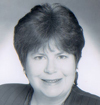 |
|
Chief
Justice Nancy A. Becker, JD ’79
Nevada
Supreme Court, 1998–2006 |
|
 |
|
Q:
What are your court’s biggest issues and challenges?
What is testimonial evidence in a post-Crawford
world where the U.S. Supreme Court didn’t define the
term and we have to reevaluate hundreds of previous cases?
What is permissible judicial speech in a
post-Republican v. White world?
What is the status of the death penalty
in light of U.S. Supreme Court decisions of the past five
years?
And what can we do to educate the public
on the role of the judiciary as an independent branch of the
government?
For the latter issue, we are beginning a
massive public outreach program. It includes broadcasting
arguments live over the Internet and making presentations
to various groups statewide, to educate them on the history
of the third branch of government and why it is independent.
We also show them how the courts work, the role of the jury,
how judges make decisions, how busy the judiciary is, what
resources it has, and other similar topics.
We started this because people are forgetting
the fundamental basis on which this country was founded. When
the independence of the judiciary is threatened, it undermines
the one aspect that makes our country unique.
The biggest challenge we face is resources.
The governor and legislature are trying to address the needs
of the judiciary, but we are experiencing tremendous urban
growth and have had a 40 percent increase in caseload over
the past four years. Processing cases in a timely, fair fashion
is impossible with our current resources.
Q:
Why did you become a justice and what does your job entail?
It probably started at George Washington
when I was student director of the Community Legal Clinics
under Eric Sirulnik; we looked for areas where the system
went wrong, then we tried to make improvements. When I returned
to Las Vegas and became a prosecutor, I felt the traditional
method in which judges were handling cases wasn’t addressing
21st-century problems. The system didn’t distinguish
between hard-core individuals and people with drug, alcohol,
or mental problems who could be rehabilitated. There was no
counseling to help these unfortunate people. They were just
sentenced to prison and recidivism was high. I felt change
was needed, toward a combination of punishment where appropriate
and rehabilitation where appropriate.
After experience as a municipal and trial
court judge, I ran for the Supreme Court because some changes
could only be made from the state’s highest court. While
the quality of education at George Washington and its clinical
programs were a tremendous benefit, my years as a judge prepared
me more for the Supreme Court. Also beneficial was being active
in the community and understanding the needs for revamping
the legal system.
I became a justice in 1998 and chief justice
in 2004, and it is a completely different job from being a
justice. You are like a company CEO, responsible for personnel
and budget decisions, working with the legislature, looking
at the operation of the lower courts, and making improvements
where needed. It also gives you a lot of opportunities.
Looking at my six years as a justice, I’m
proud of the work we’ve done to clean up death penalty
jurisprudence. We’ve also cleaned up other areas of
jurisprudence and inconsistent case law that resulted from
high caseloads and not having an intermediate appellate state
court. I’m also proud of the court’s efforts to
improve access to justice, through pro-bono services and help
for pro se litigants.
Q:
What did you learn from being a Supreme Court justice?
The greatest learning curve is having to
look at the direction the law will take based on your decision
and the quality of the opinion you write. I learned how important
it is to take the time to write good, tight, clean opinions.
I also learned, as the administrative head of the court, that
it is vital to make the public aware of the importance of
the courts. Failure to teach civics in school has resulted
in a generation that does not realize how important the judiciary
is in protecting citizen rights.
| |
|
|
| |
In
Good Company
Of the law schools
attended by the 325 current state supreme court justices,
GW ranks third in the number of alumni, with seven JDs
and two LLMs, according to our research.
The University
of Virginia ranks first, with 32 alumni, but of these,
only eight hold JDs and the remainder hold LLMs at the
university's well-known Judicial Process program for
judges.
Harvard University
is second, with 20 alumni (18 JDs and two LLMs).
Besides the
nine justices mentioned in this article, the following
GW Law alumni are retired from the bench: |
|
| |
|
|
| |
Joseph
F. Baca, JD ’64
Former Chief Justice
New Mexico Supreme Court
1992–2002
Thomas
L. Steffen, JD ’64
Former Chief Justice
Nevada Supreme Court
1982–1997
David
Newbern, LLM ’63
Former Associate Justice
Arkansas Supreme Court
1985–1998 |
|
James
Moeller, JD ’59
Former Vice Chief Justice
Arizona Supreme Court
1987–1998
Maurice
A. Hartnett III, JD ’54
Former Justice
Delaware Supreme Court
1994–2000
Harry
L. Carrico, JD ’42
Former Chief Justice
Virginia Supreme Court
1961–2003 |
|
|
| |
|
|
Back to top | Summer
2005 Table of Contents
|